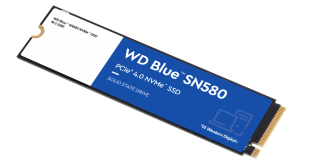Five for Friday is a weekly feature to give a brief roundup of our top five stories from the week that you might have missed. Think we left anything out? Let us know your favourite stories of the week by pinging us a tweet @pcr_online.
‘Two-year-olds should be taught to code to tackle gender gap’
Walk, talk, code. That should be the three aims of a two-year-old child of 2017, according to computing pioneer Stephanie Shirley. While most toddlers will be getting to grips with talking and walking, Shirley believes that children as young as two should also be introduced to the basics of coding. An ‘early start’, Shirley claims, ‘would encourage women to become programmers and reduce gender stereotyping’.
“I don’t think you can start too early,” she said. “Most successful later coders start between five and six. “In a sense, those years are the best for learning anything, and means that programming [hasn ’t] become set in your mind as geeky or nerdy.”
Salesforce CEO slams competitors as SaaS firm sees huge revenue jump
Salesforce CEO Marc Benioff has claimed that its competitors "have done a horrible job in the last few years" in wake of the news that the cloud CRM provider’s revenue has climbed 26 per cent year-over-year.
Largely based on what he perceives to be a decline of rival CRM vendors investing in the market, Benioff said: "Our competitors have done a horrible job in the last few years, a lot of them have really abandoned the CRM market. We’ve talked to analysts, we’re shocked, they’re shocked at how these companies have walked out of the CRM market."
However, this has largely been to Salesforce’s benefit, with the company on track for its first $10 billion year. Reporting its 2018 second quarter figures, the firm hit $2.56 billion, with a net income of $17.7 million (down from $229.6 million, mostly due to tax returns last year).
Western Digital emerges as unlikely favourite in Toshiba memory sale
Toshiba’s ongoing battle with Western Digital has taken an unexpected twist. Despite a bitter court battle between the two companies, Western Digital now looks favourites to acquire Toshiba’s valuable memory chip business. According to the Nikkei business daily report, Western Digital is now Toshiba’s preferred bidder after a previously mooted deal with private equity firm Bain Capital and SK Hynix looks to have hit the buffers.
In June, Toshiba picked a consortium including Japanese government-backed funds, private equity firm Bain Capital and South Korean chip maker SK Hynix as the preferred bidder for the prized unit. However, Western Digital’s multiple legal challenges have scuppered the deal. The subsequent legal battle between the two companies unnerved the state-backed funds, which demanded that Toshiba resolve the conflict before the sale.
Intel’s eighth-generation processors are put to the test
The build-up to Intel’s eighth-generation Core processors has been as drawn out and hyped up as much as the latest season of Game of Thrones. But it is finally here, with the first batch of laptops with eighth-generation Intel CPUs expected to hit the shelves in September.
At first glance, the announcement that the new CPUs are merely a Kaby Lake Refresh is somewhat disappointing. However, do not despair just yet. Put through its paces running through the Sysmark benmark, the latest CPUs come up trumps. Earlier this year, Intel said that its latest processors would be 30 per cent faster than last year’s chips. However, when put to the test, the CPUs are actually 40 per cent speedier, a 10 per cent surprise for all of us.
Wearables on the up, says report
Global sales of wearable devices are set to top 310 million units this year.
According to a new report from Gartner, sales will see a year-on-year increase of 16.7 per cent, to generate $30.5 billion of revenue. Of that, almost a third ($9.3 billion) will be from smartwatches.
The report goes on to say that by the end of the year, 41.5 million smartwatches will be sold. Looking ahead, they are on pace to account for the highest unit sales of all wearable device form factors from 2019 to 2021, aside from Bluetooth headsets. By 2021, there will be an estimated 81 million units, representing 16 per cent of total wearable device sales.
 PCR Tech and IT retail, distribution and vendor news
PCR Tech and IT retail, distribution and vendor news




